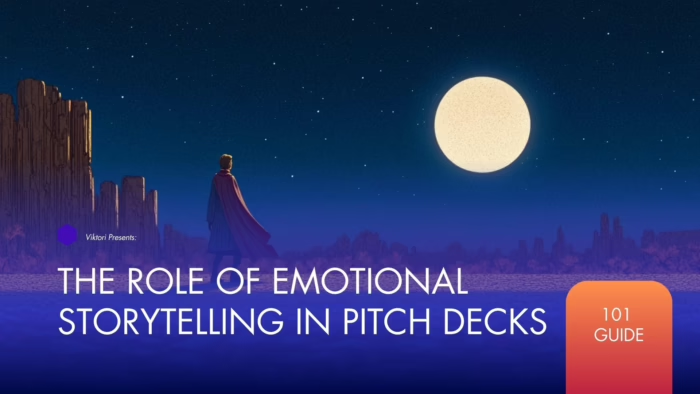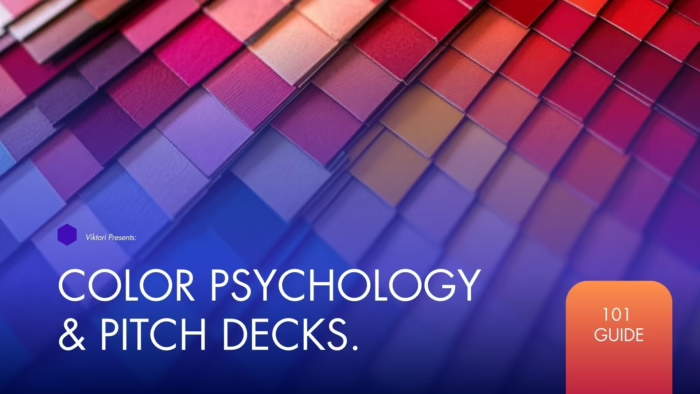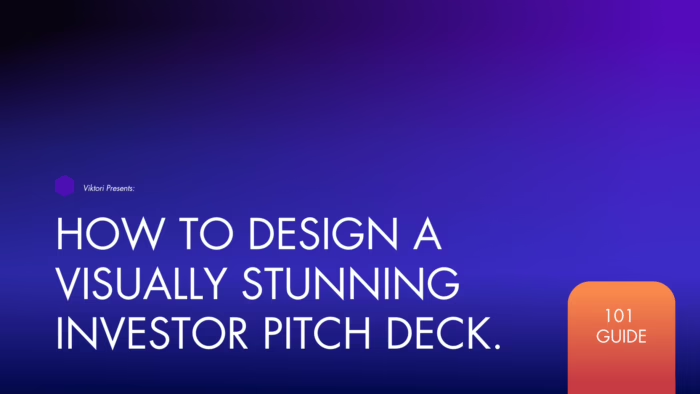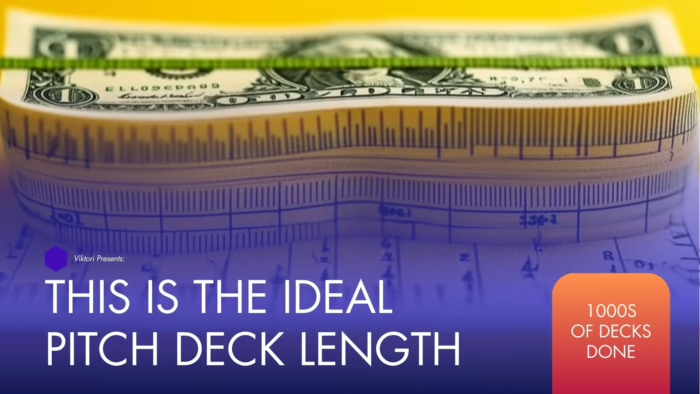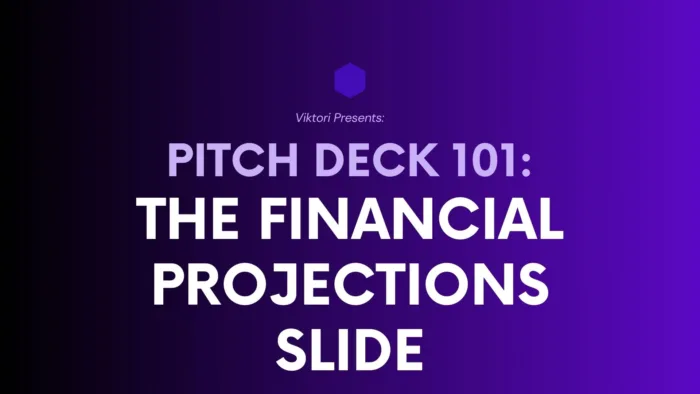You’ve got a metalworking business that’s as solid as steel, but when it comes to pitching, you feel like you’re using a rusty hammer to drive in a screw. Here’s the harsh truth: it’s not your business idea; it’s your pitch deck. Investors love shiny things—not just metals but ideas that are packaged and presented with clarity and impact.
Hi, I’m Viktor, your friendly neighborhood pitch deck expert and a metalhead (the business kind, not the music, but hey, I’ve got range). For over a decade, I’ve been helping businesses—from tech startups to industrial powerhouses—craft pitch decks that close deals and rake in millions. And now, I’m here to help you do the same for your metalworking venture.
Forget fumbling with generic templates that scream “meh.” This guide will help you forge a pitch deck that’s sharp, polished, and impossible to ignore. Let’s get to work!
Get My 12 Slide Framework That Got $500mil in Funding For Clients.
What do you think of having 12 dead simple formulas, that will help you craft 12 slides, in about 1 hour? That’s what you’ll get, when you download my 12 slide framework. Save hours crafting your pitch deck copy with my tested approach that includes:
- Elevator pitch one sentence formula
- Problem/ solution slide one sentence formula
- Competitor slide one sentence formula
- 9 other formulas, tips, tricks and advice
The formulas worked for 40+ industries and 500+ companies. Including the one you’re looking at now.
Clicking the link won’t charge you anything.
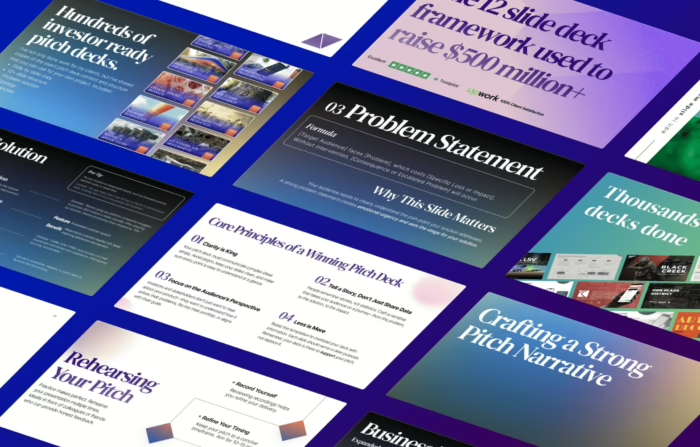
Get an investor ready pitch deck that gets you funded and saves over 30 hours of your time.
Join 100s of successful entrepreneurs who’ve transformed their pitch decks by using my hands-off approach, which includes: market research, copy, design, financials, narrative and strategy.
1 week turnaround time and less. Special pricing for early stage companies.
The least you will get on this call is 10 actionable tips & strategies to own that next pitch, worth $599, for free.
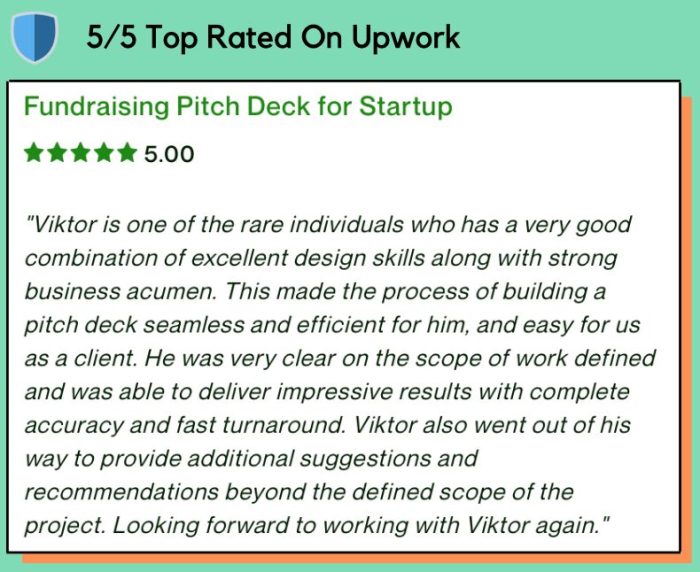
15 Slide Metalworking Pitch Deck Template | Google Slides
The above is is just a simplified pitch deck version developed as part of our entrepreneurship program for graduate studies.
Founders that are serious about getting the funding they need, opt in for a deck has industry specific content, superb narrative and award winning design like these ones below:









I can help you build that deck with my hands-off process in 7 days or less.
Book a free 30 minute call below if you’re serious about getting an investor ready deck, and we’ll discuss your needs in detail. I’ll help you design the deck, write the content, develop the narrative and flesh out the strategy with financials.

We help 15,000+ founders every month create better pitch decks.
Alternatively, get the custom template for just $69,99.As soon as the payment is processed I’ll send over a quick questionnaire and deliver the deck in 24 hours and less.

Follow us on social for the newest templates:
Here’s a detailed breakdown for fleshing out the first four slides of a metalworking pitch deck, providing a strong foundation for capturing the interest of potential investors:
Slide 1: Title Slide
- Company Name: Clearly display the name of your company.
- Logo: Include a high-resolution logo to establish brand recognition.
- Presenter’s Name and Title: Introduce yourself and your role to add a personal touch and establish authority.
- Date of Presentation: Mark the date of the presentation to contextualize the information for the audience.
Objective: The title slide sets the professional tone for the presentation, offering essential details at a glance.
Slide 2: Executive Summary
- Overview: Provide a concise summary of your company, highlighting what your business does and its purpose in the metalworking industry.
- Mission Statement: Share a compelling mission statement that reflects your company’s values and long-term vision.
- Key Highlights: Briefly mention major milestones or achievements, such as patents held, notable projects completed, or partnerships with significant industry players.
Objective: This slide is crucial as it frames the narrative for the presentation, offering a snapshot of the company’s identity and successes.
Slide 3: The Problem
- Industry Challenges: Outline the primary challenges or inefficiencies currently faced in the metalworking industry, such as outdated manufacturing processes, high waste levels, or scalability issues.
- Market Gaps: Identify specific gaps in the market that your company aims to fill. For example, there may be a lack of providers for precision metal parts in the aerospace sector or a need for more sustainable metalworking practices.
- Relevance: Explain why these problems matter, not only to your business but to the industry at large and its customers.
Objective: This slide is designed to engage investors by presenting a clear and relatable problem, setting the stage for introducing your solution.
Slide 4: The Solution
- Your Products/Services: Describe the products or services your company offers as solutions to the outlined problems. Be specific about what makes your offerings unique and effective.
- Innovative Features: Highlight any innovative features or proprietary technologies that differentiate your solutions from those of competitors. For instance, you might use advanced AI-driven machinery that improves precision and reduces waste.
- Benefits: Detail the benefits of your solution, such as cost efficiency, superior quality, or environmental sustainability. Show how these benefits address the needs of the market and create value for customers.
Objective: This slide aims to convincingly present your company’s solutions, showcasing how they are uniquely positioned to tackle the identified problems effectively. Use visuals like diagrams or before-and-after scenarios to make technical solutions more accessible and impactful.
Each of these slides plays a crucial role in setting up the narrative of your pitch deck, with the aim of building a compelling case for your metalworking business to potential investors.
Continuing from the initial four slides, here’s a detailed breakdown for fleshing out the next four slides of your metalworking pitch deck:
Slide 5: Market Analysis
- Market Size and Growth: Provide data on the size of the metalworking market and its expected growth rate. Include geographical areas where growth is most pronounced.
- Target Audience: Define your primary target audience, such as automotive manufacturers, construction firms, or aerospace companies. Include demographic and psychographic details where relevant.
- Market Trends: Discuss current trends influencing the metalworking industry, such as the adoption of new technologies like 3D printing or the increasing demand for environmentally friendly manufacturing processes.
- Visual Aids: Use charts or graphs to illustrate market data, making complex information easier to digest and more engaging.
Objective: This slide should establish that there is a lucrative and growing market for your products or services, demonstrating your understanding of the industry dynamics.
Slide 6: Business Model
- Revenue Streams: Outline how your business generates revenue. This might include direct sales, subscription services, contract manufacturing, or after-sales services like maintenance.
- Pricing Strategy: Explain your pricing model. Are your prices premium due to high-quality craftsmanship, or competitive to penetrate the market?
- Sales and Distribution: Describe how your products or services reach the market. Discuss any partnerships with distributors or use of online platforms and direct sales teams.
Objective: This slide provides clarity on how your business operates and makes money, detailing the financial logic behind your company’s operations.
Slide 7: Technology and Process
- Manufacturing Technologies: Detail the specific technologies used in your production processes, such as CNC machining, laser cutting, or robotic automation. Highlight any proprietary or cutting-edge technology.
- Process Efficiency: Explain how these technologies contribute to efficiency, accuracy, and waste reduction. Include any metrics or case studies that demonstrate improvements over traditional methods.
- Innovation: Discuss ongoing or future innovations that could further enhance your manufacturing capabilities or open up new markets.
Objective: This slide is designed to impress upon investors the sophistication and scalability of your production capabilities, underscoring your technological edge.
Hold on. You might want to check my list on the best presentation and communication books...
These are crucial books that will help you improve the design and structure of your decks and presentations, besides improving your delivery and skyrocketing your confidence when facing investors. Check them out below.
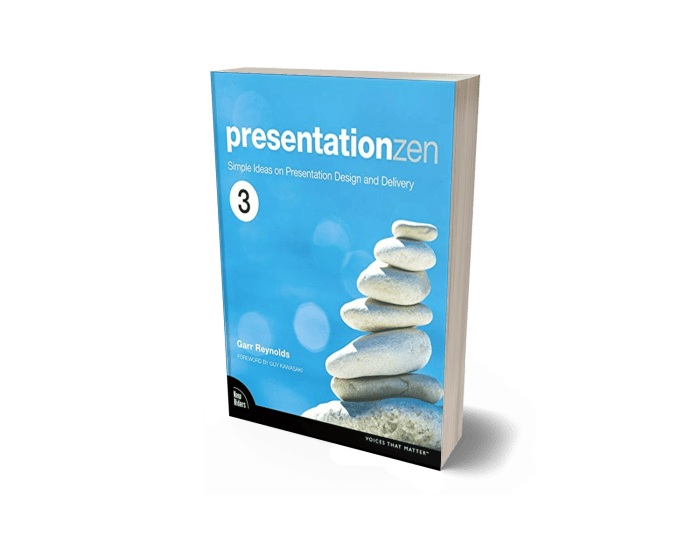
Slide 8: Competitive Analysis
- Key Competitors: List major competitors in your market. Include a brief overview of each competitor’s strengths and weaknesses.
- Competitive Advantages: Clearly state your competitive advantages, such as superior technology, strategic location, skilled workforce, or stronger customer relationships.
- SWOT Analysis: Optionally, include a SWOT analysis to succinctly present strengths, weaknesses, opportunities, and threats in relation to your market positioning.
- Visuals: Use comparative charts or matrices to visually distinguish your company from competitors.
Objective: This slide aims to position your company within the competitive landscape, demonstrating why your business is poised to outperform others in the same space.
Each of these slides further builds on the narrative that your company is not only well-understood in terms of market and competitive environment but also has a solid business model and advanced technological capabilities. This sequence of slides should convince potential investors of the viability and potential for growth of your business.
Continuing to build a compelling narrative for your metalworking pitch deck, here’s a detailed breakdown for the next four slides, each designed to further solidify investor confidence in your business:
Slide 9: Marketing and Sales Strategy
- Marketing Channels: Detail the channels you use to reach your target market, such as industry trade shows, online marketing, direct sales, or partnerships with other companies.
- Sales Tactics: Describe your sales approach, whether it’s B2B direct sales, distributors, or online direct-to-consumer strategies. Highlight any key sales successes or partnerships that have significantly contributed to your revenue.
- Customer Acquisition: Explain your strategy for acquiring new customers, including any incentives, introductory offers, or loyalty programs. Discuss how you maintain relationships with existing customers to ensure repeat business.
- Visual Aids: Use flowcharts or diagrams to illustrate your sales funnel or customer journey, showing how marketing and sales strategies align to achieve business objectives.
Objective: This slide demonstrates your proactive approach to driving business growth through targeted marketing and sales strategies, showcasing how you effectively convert market opportunities into revenue.
Slide 10: Team and Management
- Key Team Members: Introduce the core team members, focusing on their backgrounds, relevant experience, and roles within the company. Highlight any industry expertise, previous successful ventures, or notable achievements.
- Management Structure: Describe the management structure of your company, showing how the team’s expertise is leveraged to guide business operations, innovation, and strategic decisions.
- Advisory Board: If applicable, mention any advisory board members or consultants who provide strategic guidance, underscoring their industry credentials and the value they bring to the business.
- Visuals: Include professional photos of team members, and consider a simple organizational chart or bios with icons representing their skills or roles.
Objective: This slide aims to build credibility by showcasing a competent and experienced team, emphasizing that the human capital within your company is well-equipped to execute the business plan and drive growth.
Slide 11: Financial Projections
- Revenue Projections: Provide a clear forecast of expected revenues over the next 3-5 years, explaining the assumptions behind your growth projections, such as market expansion, new product launches, or entering new markets.
- Profitability: Highlight when the company expects to reach profitability and the key drivers behind profit margins, including cost management strategies and pricing models.
- Key Financial Metrics: Discuss important financial metrics such as EBITDA, gross margin, and cash flow. Include past financial performance if applicable to demonstrate growth trends.
- Graphs and Charts: Use line graphs to show revenue growth and bar charts for expenses vs. revenue, making the data easy to understand at a glance.
Objective: This slide provides potential investors with a clear view of the financial health and future growth potential of your business, underlining your understanding of financial dynamics and business scalability.
Slide 12: Funding Requirements
- Capital Needed: Specify the exact amount of funding you are seeking and outline the stages of funding if applicable (e.g., Series A, Series B).
- Use of Funds: Clearly detail how the raised funds will be used, such as expanding production capacity, R&D for new technologies, hiring key staff, or marketing initiatives.
- Expected Impact: Explain how the investment will impact the business, such as accelerating growth, expanding market share, or enhancing product offerings.
- Offer to Investors: Describe what you are offering in return for the investment, such as equity share, convertible notes, or other financial instruments.
Objective: This slide aims to align investors with your funding strategy, clarifying how their financial contributions will directly facilitate business goals and increase the company’s value.
These slides further detail how your metalworking business plans to achieve its strategic goals, manage its operations efficiently, and utilize new funding to foster growth, all crucial elements in securing investor confidence and backing.
Continuing with the finalization of your metalworking pitch deck, here’s a breakdown of the last two slides that will round out your presentation and leave a lasting impression on potential investors:
Slide 13: Milestones and Future Plans
- Achievements to Date: Summarize key milestones already achieved by your company, such as successful product launches, critical hires, important certifications, or significant sales contracts. This establishes a track record of success and execution.
- Short-term Goals: Outline the objectives for the next 1-2 years, which could include expanding production capacity, entering new markets, or developing new products. This demonstrates your strategic focus and operational planning.
- Long-term Vision: Share your long-term aspirations for the business, such as becoming a leader in sustainable metalworking practices, dominating specific market segments, or innovating revolutionary metalworking technologies. This communicates ambition and long-term thinking.
- Visuals: Include a timeline graphic that visually represents past milestones and future goals, making it easy for investors to understand the trajectory of your business.
Objective: This slide aims to reassure investors of your company’s past accomplishments and align them with your future ambitions, reinforcing confidence in the continued growth and direction of the business.
Slide 14: Closing Slide
- Summary and Appeal: Concisely recap the highlights of your pitch, emphasizing your unique value proposition, the investment opportunity, and why your company stands out in the metalworking industry. End with a compelling appeal that encourages investors to take action.
- Contact Information: Provide clear contact details for investors to initiate further discussions. This includes phone numbers, email addresses, and possibly social media or website links.
- Call to Action: Clearly state what you want from your audience, whether it’s setting up a meeting, reviewing more detailed financial documents, or discussing potential investment terms. Make it easy for investors to know the next steps if they are interested in pursuing an opportunity with your company.
- Thank You: Close with a polite thank you to acknowledge the time and consideration of the investors. A respectful closing can leave a positive, lasting impression.
Objective: The final slide is crucial for reinforcing your pitch and ensuring that investors leave with a clear understanding of why they should invest in your company. It provides all necessary information to take the next steps and maintains professional courtesy.
These last two slides are designed to effectively conclude your presentation, ensuring that you leave the investors with a clear understanding of your business achievements and future potential, as well as explicit instructions on how they can engage with your company further.
Last Words
So, there you have it—your blueprint for creating a pitch deck that’s as precise as the parts your business makes. A well-crafted deck isn’t just a presentation; it’s your golden ticket to investment, partnerships, and growth.
If you’re still thinking, “This sounds great, but where do I even start?”—relax. I’ve got you covered. My tried-and-tested metalworking pitch deck template is here to save you time, stress, and awkward investor silences. It’s helped others secure funding and land deals, and it can do the same for you.
Ready to turn your metalworking dreams into a fully funded reality? Let’s make it happen.
You got this!
But if you don’t got it:
Join hundreds of successful entrepreneurs who’ve transformed their pitch decks with my help.
Let me develop an investor ready deck by using my hands-off approach, which includes: market research, copy, design, financials, narrative and strategy.
One week turnaround time.
The least you will get is 10 actionable tips & strategies to own that next presentation, worth $599, for free.

If you want to really dive into the world of pitch decks, check out our complete collection of pitch deck templates.
Check out some of the essential 101 guides:
The Dreaded Financial Projections Slide in a Pitch Deck: What’s The Secret?
This is the ideal pitch deck length + exact slides Author: ViktorPitch Deck Expert. Ex…
The Role of Emotional Storytelling in Pitch Decks
Why Color Psychology in Pitch Decks Matters More Than You Think
This is the ideal pitch deck length + exact slides Author: ViktorPitch Deck Expert. Ex…
How to Design a Visually Stunning Investor Pitch Deck + Template
This is the ideal pitch deck length + exact slides
This is the ideal pitch deck length + exact slides Author: ViktorPitch Deck Expert. Ex…
Mastering the Financial Projections Slide: Turning First Impressions into Lasting Opportunities
You’re convinced your startup is the next big thing, but somehow, your pitch keeps landing…


